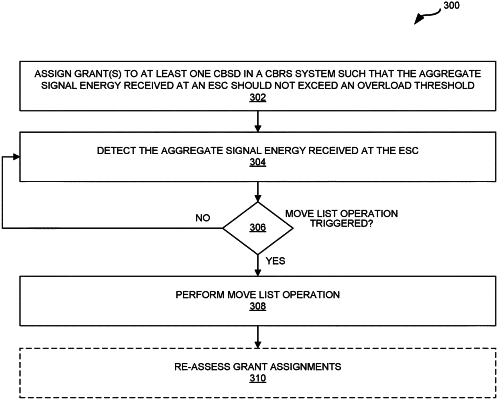| CPC H04W 72/0453 (2013.01) [H04B 17/318 (2015.01); H04W 72/23 (2023.01)] | 27 Claims |

|
1. A system for protecting an Environmental Sensing Capability (ESC), comprising:
a spectrum access system (SAS) configured to allocate a frequency band in the system;
at least one Citizens Broadband Radio Service device (CBSD) communicatively coupled to the SAS via at least one Ethernet connection and configured to provide wireless service to user equipment (UEs); and
the ESC communicatively coupled to the SAS and configured to detect RADAR signals from offshore RADAR devices;
wherein the SAS is configured to assign grants to the at least one CBSD such that an aggregate signal energy received at the ESC does not cross an overload threshold, as calculated by the SAS;
wherein the aggregate signal energy includes energy received at the ESC from any interference from the at least one CBSD and RADAR signals, if present;
wherein the aggregate signal energy is an aggregate mean signal energy of an aggregate signal, wherein the aggregate signal is a root mean square signal power that includes interference from the at least one CBSD and energy from at least one of the RADAR signals;
wherein the ESC is configured to detect the aggregate signal energy received at the ESC, and trigger, in response to the aggregate signal energy exceeding the overload threshold, an operation that suspends transmission of one or more CBSDs or moves the one or more CBSDs to a different frequency channel.
|